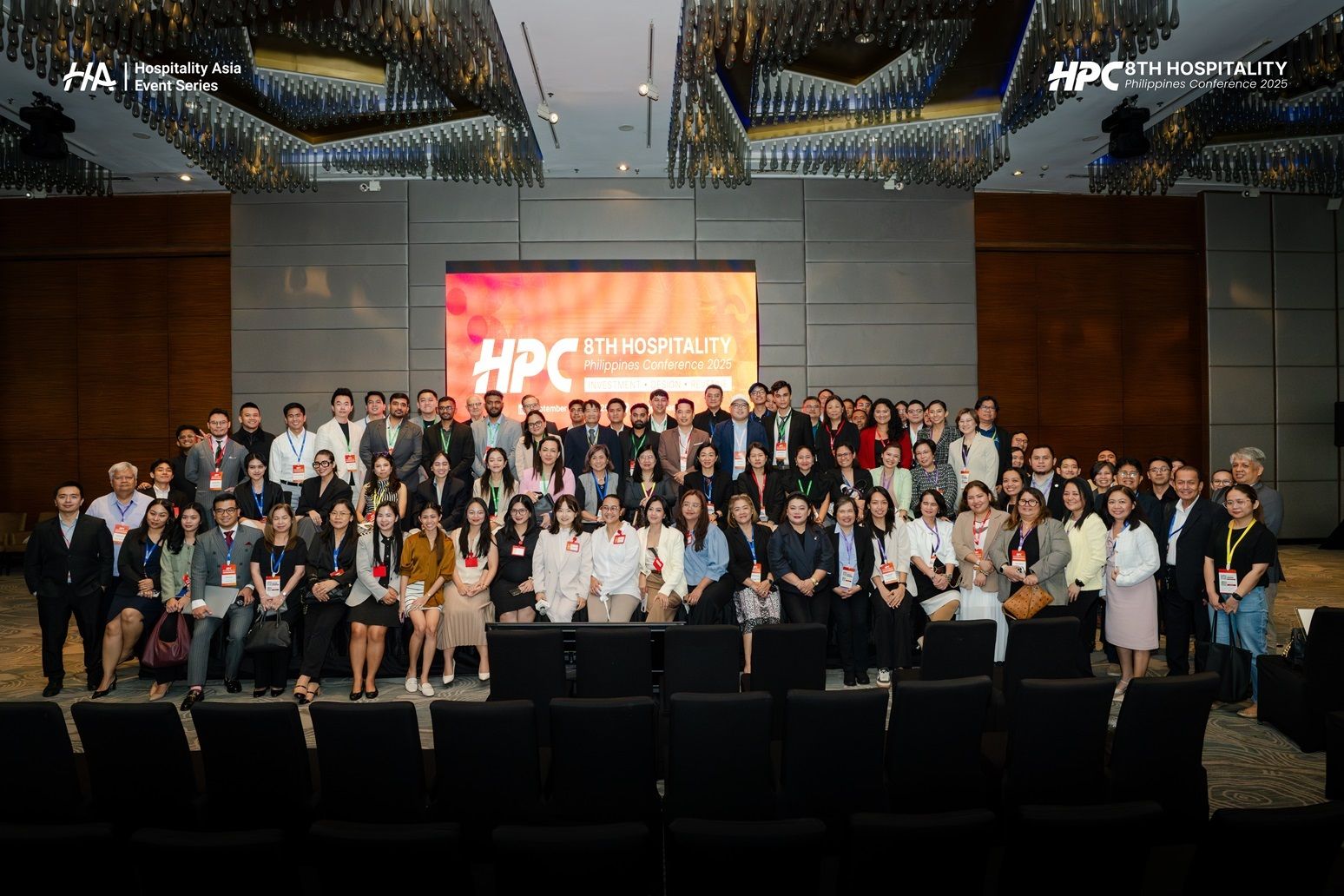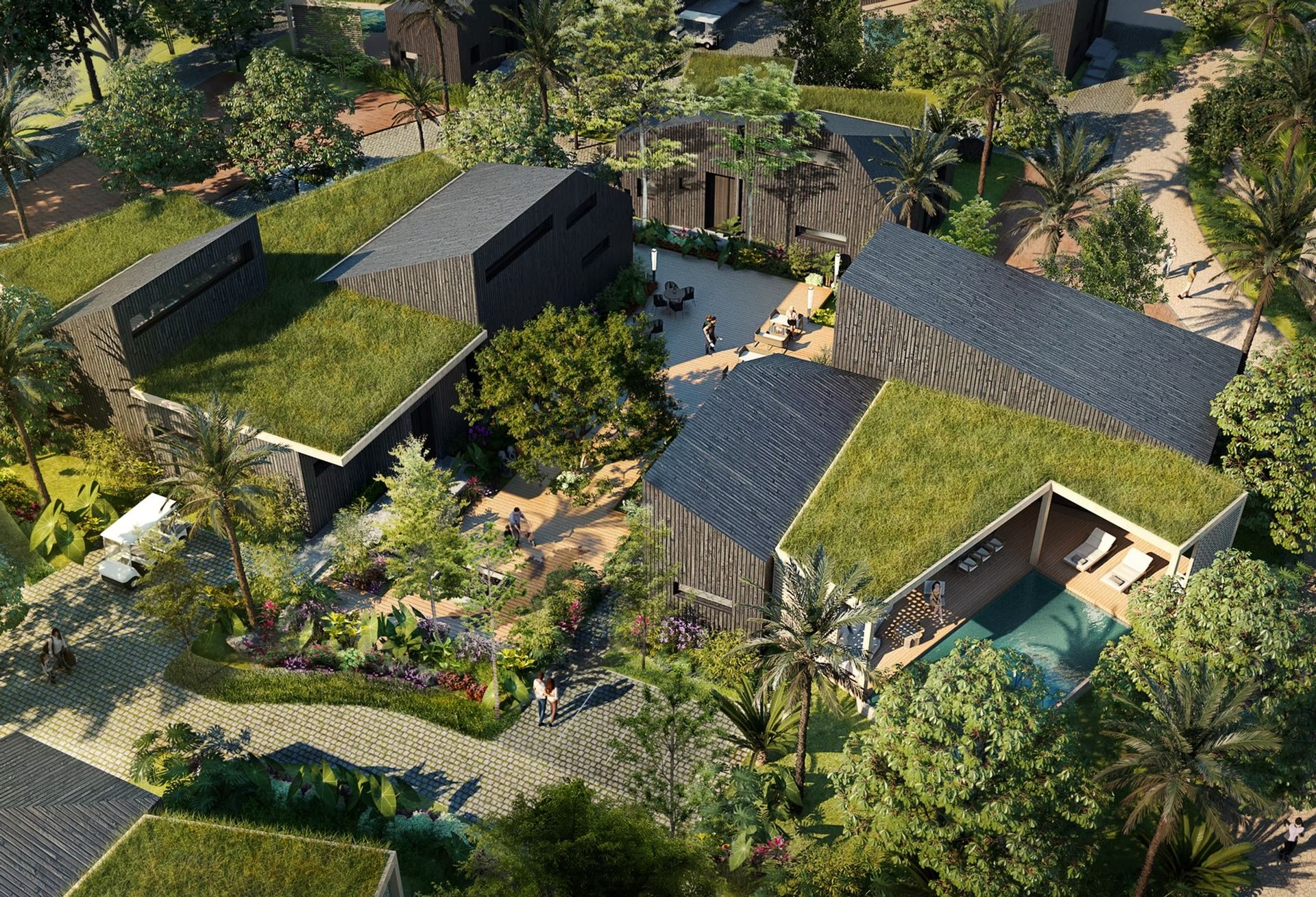- Asia Sustainable Travel
- Posts
- Designing Tomorrow’s Resorts: Sustainability, Immersion, and ROI at HPC2025
Designing Tomorrow’s Resorts: Sustainability, Immersion, and ROI at HPC2025
Dear AST friend,
This week’s Feature Story unpacks the headline insights from the 8th Hospitality Philippines Conference (HPC2025) — where more than 400 leaders from across the industry gathered in Manila to shape the future of hospitality.
With three dedicated summits — Investment, Design, and Revenue — the dialogue cut straight to the strategies shaping resilience and competitiveness in a fast-evolving market.
At the Hotel Design Summit, chaired by our Co-Founder Rhea Vitto Tabora, the conversation zeroed in on what matters most: sustainability, immersive guest experiences, and design excellence.
Well, we’re going to take the conversation further, and online.
On November 6, 2026, AST will host the next must-attend webinar: “Biophilic Design in Hospitality: A Secret to Happier Guests & Healthier Profits.”
Secure your place through the registration link below. 👇🏽
If you like our content and want to support us, please share this newsletter with your friends to help us grow.
We plant a tree to welcome every new subscriber through our partnership with OneSeed.

Designing Tomorrow’s Resorts: Sustainability, Immersion, and ROI at HPC2025
Featuring six panel discussions, the Hotel Design Summit Philippines offered actionable insights for property developers, hotel operators, architects, and designers.
This article summarizes the key takeaways from the summit, providing practical strategies for hospitality professionals to reimagine their properties with a focus on sustainability, innovation, and guest-centric design.
Sustainable by Design: Future-Proofing Resorts for Climate and Efficiency
How can resorts embrace sustainability without sacrificing luxury or guest experience?
This was the challenge addressed by industry leaders during the panel "Sustainable by Design," moderated by Felix Guggenheim, President of GCI-Hospitality, Inc.
The discussion featured insights from Mikel Arriet (General Manager, Anya Resort Tagaytay), Paolo Campillo (Managing Director, 3AM Consultancy), William Ti Jr. (Principal Architect, WTA Architecture and Design Studio), and Carlos Lorenzo Vega (Chief Customer Engagement Officer, First Gen Corporation).
1. Embed sustainability early — 48 months ahead.
Building orientation matters: Optimize building orientation to reduce core temperature, resulting in significant energy cost savings over time. “You lower the core temperature one or two degrees—in your 10-year ROI, how many millions of savings is that? Once the cement’s been poured, I can’t move the building.”
Built-in renewable systems: Plan ahead for renewables like solar panels and rainwater harvesting; retrofitting after construction is expensive and less effective.
Team collaboration: Developers should form a multidisciplinary team early, including consultants and energy experts—not just architects—to ensure sustainability is prioritized from the beginning.
2. Design with nature, not against it.
“Build with nature, not against it,” urged Guggenheim. Ti emphasized the preservation of natural landscapes and integrating them into the resort experience.
Preserve natural features: Keep parts of the site untouched to maintain its natural beauty and ecological balance.
Community connection: Integrate hotels and resorts into their local communities, avoiding the “walled-off” approach, so they become an integral part of the community rather than just a point of entry and exit.
Climate resilience: Choose native plants and embrace the natural topography to reduce maintenance and irrigation needs, which in turn enhances climate resilience.
3. Take control of your energy sourcing.
Vega explained that energy efficiency begins with the source. Resorts can reduce costs and environmental impact by opting for renewable energy sources and monitoring their energy consumption.
Renewable energy: Initiatives like the Green Energy Option Program (GEOP) allow resorts to source power from renewable providers, reducing costs and carbon footprints. For remote resorts, consider investing in hybrid microgrids (solar, batteries, and diesel) for enhanced energy independence.
Energy monitoring: Install energy monitoring tools: “If you cannot monitor something, you cannot measure it, you won’t be able to manage it.”
Smart design: Plan for features like solar-ready rooftops and efficient HVAC systems during the design phase to maximize long-term savings.
4. Make sustainability a story guests can see and feel.
Arriet shared how Anya Resort Tagaytay combines sustainability with guest experience, proving that luxury and eco-consciousness can coexist.
Three R’s: Infuse “reduce, reuse, recycle” throughout the guest journey.
Local stories: Welcome guests with locally sourced drinks and use refillable amenities crafted from volcanic ashes to create memorable, eco-conscious experiences.
Staff training: Comprehensive training ensures sustainability is a daily practice, from energy monitoring to waste management.
Share the story and impact of these initiatives with travelers, turning eco-consciousness into elevated, memorable experiences.
Key Takeaway:
Sustainability is not a cost; it’s an investment in long-term success, benefiting all industry stakeholders.
By planning ahead, working in harmony with nature, and prioritizing energy efficiency, resorts can lower expenses, enhance guest experiences, and build a lasting legacy of environmental responsibility.
Resort Reimagined: Designing Immersive and Sustainable Escapes
Moderated by Harvey Vasquez (Design Principal, Kalamaam Design Studio), this panel featured Stuart Marshall (Director of Global Sales, Stack Modular), Daniel Anderson (Chairman, T1 Project Management Inc.), and Felino “Jun” Palafox, Jr. (President and Founder, Palafox Associates) who shared strategies for balancing sustainability, cost, design, and authentic guest experiences.
Luxury Meets Lifestyle: Integrating Brand and Retail
How can high-end retail enhance the luxury hotel guest experience? This question guided a panel discussion on integrating brand and retail to create lifestyle-oriented destinations.
Moderator John Ian Fulgar (Principal Architect, Fulgar Architects) led the conversation with Toon Virochpoka (Co-CEO, Design 103 International) and Phan Huu Duc (Regional Business Development Director, TUI Hotels & Resorts). They explored how merging hospitality with retail can diversify revenue, build brand loyalty, and create unforgettable guest journeys.
Designing for the Soul: Wellness, Art & Cultural Expression
In a world filled with chaos, travelers are increasingly seeking sanctuaries. The panel "Designing for the Soul" discussed how to create these spaces by blending wellness, art, and cultural expression.
The author led the discussion with Denise de Castro (Principal Architect, DEQA Design Collaborative), Catherine Turvill (President, Nurture Wellness Village Tagaytay and Wellness Tourism Association of the Philippines), and Ryan Kenneth Escobido (Resort Manager, Lascaidas Resort), who shared how soulful design, rooted in Filipino identity, can create transformative hospitality experiences.
Facades that Speak: Architecture as Brand Identity
A building's facade is the first chapter of its story. In hospitality, it shapes first impressions and communicates a brand's identity.
Moderated by Royce Nicdao (Director, WTA Architecture and Design Studio), this panel featured Timothy Wong (Design Director, POLYGON), German Paulo de Mesa (Partner and Director, Palafox), and Prasasti Chenchin (Director, SCSY Studio), who discussed how architecture translates brand narratives into physical forms.
Designing with Nature: Landscapes, Biophilia & Bamboo in Hospitality Spaces
In modern luxury hospitality, nature has evolved from being a mere backdrop to becoming the centerpiece of the guest experience.
The panel explored how landscapes, biophilia, and bamboo can transform hospitality spaces into immersive, sustainable sanctuaries that resonate deeply with guests.
Arch. Romolo V. Nati (CEO & Chairman, Italpinas Development Corporation) led the discussion, which featured insights from Herbert Montevirgen (Associate - Hospitality Planning Landscape, HKS Asia Pacific Design Consulting) and Erick Yambao (Founder and Principal Designer, Plontur).


This newsletter may contain affiliate links. If you click on one and make a purchase, we may earn a commission at no additional cost to you. Our recommendations are based on thorough research and personal experience, and we only promote products and services we genuinely believe in. Thank you for supporting our work.













